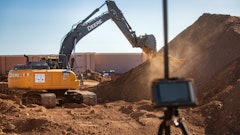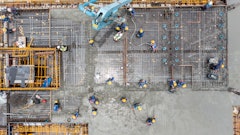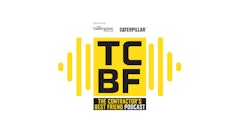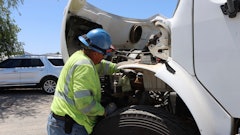
Well, here we go – 2023 is behind us, while most of 2024 and all of 2025 are ahead of us. Your team’s job, at this point, is to create the plan and execute the plan. There is probably nothing new with that statement in normal economic times, when you have a steady stream of economic data to work with (such as small changes in pricing and payroll). But, as you well know, there has been nothing “ordinary” the past three years. Conditions are sure to again be unusual in 2024, meaning you have your job cut out for you regarding the next several months.
These days, it’s even tough to know what sales, cost of sales, sales pricing, gross profit percentage, operating costs and operating margins mean and how you got there. If you were lucky, you made a gross profit, but it may be “profit” loosely defined if operating costs were not properly managed. When inflation runs at 4% a year, for example, a 4 % increase in sales does not mean a 4% increase in net profit.
Stop for a minute and think about car sales. Sales went up 10%, for example. But if that 10% does not result in more unit sales, did you have a sales increase or not? I say NOT. So, the same logic goes for the construction business. Did you sell more hours or materials used to produce sales, or did you just pass on costs with no increase in business, or perhaps you even had a reduction in business? Even if you had an increase in your top line and you held your gross profit margin, if operating costs and interest costs increased (which we know they did), your net income and cash flow decreased.
Let’s discuss inflation for a moment. It’s more complicated than you think.
First, we encountered the demand supply issue, where most of your material costs went through the roof. Payroll and operating expenses followed suit. Corrections have been made to return some of these costs back to “normal,” and the balance of your Cost of Goods materials are probably moving the same way. You can expect to get close to prior costs, but in most cases, will not get back to 2019-20 numbers.
At the same time, inflation, as you see and hear on TV every day, has increased and continues to increase as we speak. In fact, if you use the Fed rates, over the past four years, it’s up 20% and you are NOT going to get that back unless there is a major deflation caused by excess supply, brought on by a meaningful recession, with a mild recession being what the Fed wants to see, so they can reduce rates.
Let’s say you started out with $100,000 of expected expenses in your business. During the pandemic, the $100,000 turned into $130,000; a 30 % increase, which, from what I hear, is probably a low number. Then, the normalized number worked its way down to $110,000, and from there on you have the annual increases to add to that figure, which you must work with to bid, build, finance and collect to keep your head above water.
This is how it works:
Starting expense load: $100,000
Pandemic demand supply hit impact: $30,000
Demand Supply normalization: -$20,000
Net change: $110,000
2020 inflation of 1.2%: $1,320
Balance 2020: $111,320
2021 inflation of 7.0%: $7,792
Balance 2021: $119,112
2022 inflation of 6.5%: $7,742
Balance 2022: $126,854
2023 inflation of 3.2: $4,059
Balance 2023: $130,913
Get it? Sure, inflation is slowing up. But when you see where we have gone over the last four years, your costs have increased by $31% at a minimum, meaning your budget, bidding, building, and billing need to take this inflation impact into account.
I have a personal economist I rely on to check the cost of living: my wife. Every time we go to Walmart, she points at every item in the cart and says, “That was $3 cheaper last year. That was $5 cheaper last year,” and so on. And she is only comparing from year to year; not this year against prices four years ago.
So when the Fed tells you inflation is down to 2%, you will know that 2% is on top of the 30% you are currently incurring, keeping in mind that a reduction in future costs comes most likely with a recession, which will leave you bidding using lower pricing, while you may still be carrying higher cost inventory.
The bottom line here is, a contractor needs to review every line item and all major suppliers in terms of what you were paying four years ago, what you paid in 2023 and what you will need to pay in 2024. In fact, I would do this analysis quarterly to keep your suppliers awake and, at the same time, be “shopping” for better deals. Some items we know are increasing are payroll and, thus, payroll taxes, health insurance with a 10% increase, company insurance with at least a 6% increase and interest rates for most of the year. In addition, higher-cost projects will increase your need for capital via a line of credit; work-in-process inventory will be higher, with accounts payable increasing, as well. In short, if you do not have adequate lines of credit available, a cash shortfall is certainly possible.
I suggest you prepare quarterly budgets and cash flow statements to stay ahead of the game. Doing the review monthly will let you know if you are headed for trouble, and by monthly, I mean no later than the 15th of the following month. If you do not have the internal expertise to prepare the budget and cash flow, use someone like Dennis at Builder Resources ([email protected]) to help with the process. Finding out that you are running a negative cash flow operation late in the game may wind up meaning there is no way to fix the problem. Do yourself a favor and budget the plan and execute the plan using numbers you are familiar with.
HAVE A GREAT AND PROFITABLE 2024!



























